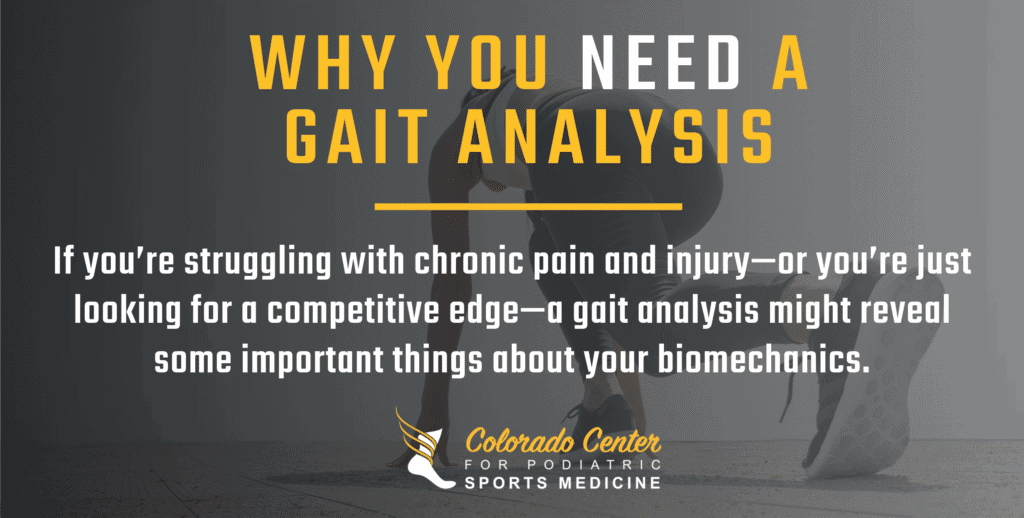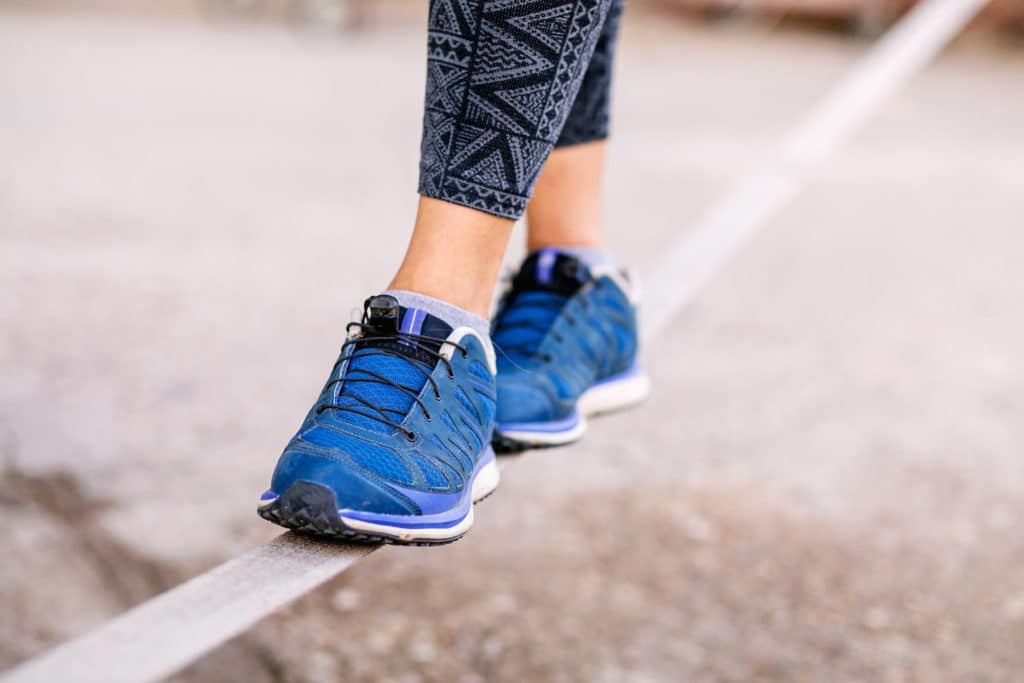Why You NEED a Gait Analysis
Athletes are looking for any edge they can get. And it’s almost unbelievable how hard they’ll work to get it.
How many hours have you put in at the gym or on the training field in order to get just a little stronger, a little faster, a little more explosive?
How many days have you gotten up long before the sun in order to get in a run or a workout before tackling the day’s responsibilities?
Yet there’s one thing (among many) in particular that most athletes don’t really fully consider during training, and that’s how their foot structure and gait mechanics help (or hurt) their performance—and also decrease or increase their risk of suffering a frustrating setback via injury.
In fact, if you find yourself continually struggling with nagging injuries or recurring pain and nothing seems to help—new shoes or cleats, stretching, dry needling, physical therapy, etc.—it’s quite likely that your real problem is a biomechanical flaw that you haven’t addressed.
And if your gait mechanics are off, then a simple gait analysis and an appropriate pair of orthotics could allow you to make much more significant gains in training—all while reducing your risk of pain and injury.
In short, that’s why you NEED a gait analysis. But let’s dig a little deeper.

Foot Structure
It’s important to remember that no one on planet earth has feet that are shaped exactly the same as yours are.
And it’s not just a matter of precise length or width, either. For example, some people have relatively (or even completely) flat arches that pronate excessively when bearing weight. Others have arches that are excessively high and rigid, which is typically associated with poor shock absorption performance.
As you might imagine, not all foot structures are equally optimized for athletic performance. Some will sap your mechanical energy and “springiness,” limiting your explosiveness. Perhaps more critically, though, some feet will just fatigue and wear down faster, meaning you’re more likely to hurt yourself, and be unable to put in as many training hours as your peers.
The Gait Cycle
Foot structure is one of the many factors that in turn influence how your feet and ankles move during walking, running, and jumping.
The full (simplified for convenience) gait cycle for walking looks something like this:
- Heel strike. Initial contact between the foot and the ground, usually around the middle to outside of the heel.
- Loading response. As your weight comes forward, your arch flexes to absorb the weight, and your opposite foot comes off the ground.
- Mid-stance. When all your weight is now on the first foot.
- Heel off. As your weight continues to move forward through the midstance into the terminal stance.
- Toe off. As you propel yourself forward—and the energy stored in the arch releases to help you accelerate.
- Swing phase. Now completely off the ground, the foot swings forward and prepares for the next step.
When running, the general biomechanical motions are broadly similar, but with a few obvious differences. One is that both feet are never on the ground at the same time. Two is that the stride length is much longer. And three, you’ll require a lot more strength, balance, and joint flexibility than you do when walking.
Certainly, to some extent you can improve your gait biomechanics through training. You might try improving your ankle range of motion or leg strength or adjusting your stride length in order to improve your form.
But some aspects of your gait cycle are a little more “hard coded” into your own personal physical limitations. As we said previously, a flat arch may lead to excessive pronation and ankle rotation.
And this isn’t “just” an ankle problem. Biomechanical flaws that start in the feet can pull joints out of alignment and create excess stress all the way up your legs, hips, and even back. This creates inefficiencies throughout your gait cycle that not only can lead to pain and injury, but reduce your athletic potential, too.

Analyzing Your Gait
Now, there are plenty of podiatrists (and even sporting goods stores) out there who will watch you walk on a treadmill, record a video, and use it to make some general suggestions about shoes or orthotics. They may even call it a “gait analysis.”
At the Colorado Center for Podiatric Sports Medicine, we take things to the next level. Because we know how much this stuff matters to you.
Our office is equipped with a sophisticated pressure mat that provides a precise digital “map” of pressure and forces across your feet. And it’s not just a static image. As you walk on the mat, we can see how these forces change and move during the entire course of the gait cycle.
These readings allow us to get very specific when identifying flaws in your biomechanics and foot structure and help us predict what kinds of injuries and painful symptoms you’re at the greatest risk of experiencing.
They’ll also help us ensure that, if you do need a pair of custom orthotics, we have the most accurate and detailed information available to help create and fit them to your feet and your needs as exactly as possible.
So, if you’re looking for an edge—and especially if you continue to struggle with chronic pain and injury related to sports or activity—give us a call and schedule your gait analysis. You might be surprised at how much of a difference it could make.
You can reach the Colorado Center for Podiatric Sports Medicine at (720) 600-3380. Or fill out our online contact form and a staff member will reach out to you.
—
Visit Us
1551 Professional Lane, Ste. 105
Longmont, CO 80501
Contact us
(720) 600-3380 Tel
(720) 306-5430 Fax
Hours
By Appointment Only
© Colorado Center for Podiatric Sports Medicine | Privacy Policy

